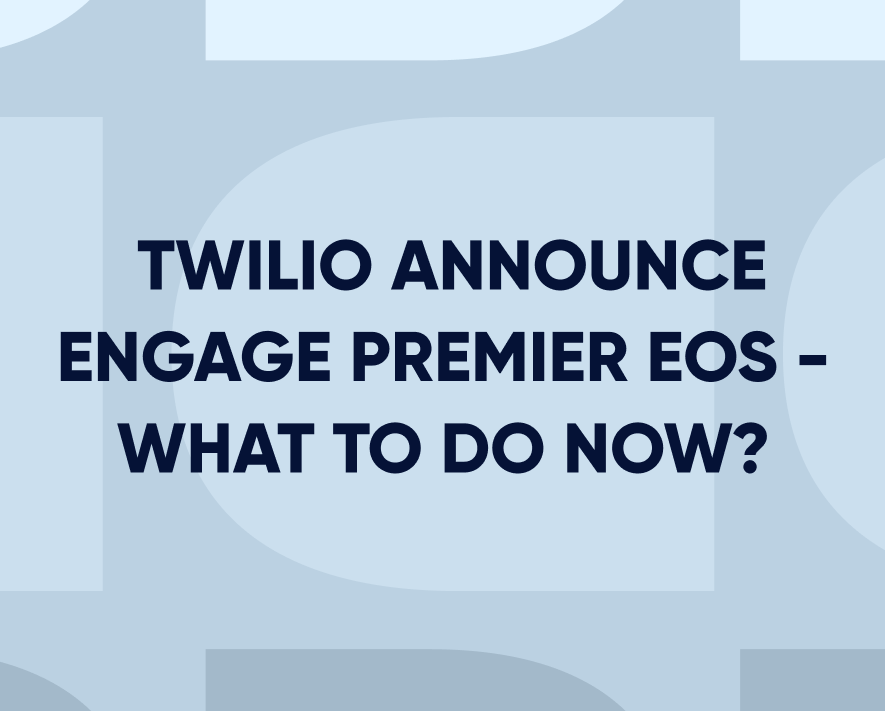Top 6 Customer Experience Trends Shaping Telco in 2025
Updated on 26 Nov 2024
You actually look forward to interacting with your telco provider. Whether it’s a phone call, website visit, or using their mobile app, you’re confident they’ll deliver a great experience.
Sounds like science fiction, right?
Well, the next few years might just turn that fiction into reality.
The telecommunications industry is changing. And customer experience (CX) is at the forefront.
Telco companies are more focused on delivering superior customer experiences than before.
In fact, here’s a mind-blowing nugget for you:
Bain & Company partnered with a European telco to revamp their CX.
The results?
A staggering 50% boost in Net Promoter Score (NPS) and a 20% increase in-store sales, just from improving CX.
So, what’s the secret sauce? How are telcos transforming into companies we might actually enjoy dealing with?
It’s all about embracing the latest customer experience trends.
In this guide, we’ll walk you through the top six customer experience trends shaping the future of the telco industry.
Let’s dive in.
Trend #1: Hyper-Personalization Through AI and Data Integration
Let’s face it:
Personalization isn’t a luxury anymore. It’s what customers expect, especially in telco where loyalty can vanish faster than your cell signal in an elevator.
And it’s not just about calling your customers by their first name in an email.
It’s about delivering highly relevant experiences tailored to their preferences, needs, and behaviors.
Here’s a mind-blowing stat:
41% of customers say they’d be more loyal to their telco if personalization was done right.
But then, here’s the kicker:
While 80% of telcos think they’re nailing it, only 40% of customers agree.
That’s a big gap in perception.
In fact, it’s not a gap. It’s a canyon.
And it highlights a serious issue—customers and telcos aren’t seeing eye to eye on what personalized service really means.
So, what does real hyper-personalization look like?
Imagine this:
- Your telco notices you’re binge-watching “Stranger Things” and offers a data plan perfect for Netflix addicts.
- You’re planning a trip to Bali, and boom! Your telco slides into your DMs with a custom travel package.
- Your internet starts acting up, and your telco’s already fixing it before you even notice.
The rise of digital mobile virtual network operators (MVNOs) has pushed expectations even higher. These tech-savvy players are showing what’s possible, and traditional telcos are feeling the heat.
But here’s the problem:
Many big telcos are stuck with legacy MarTech and CX systems that are older than your first smartphone. These dinosaur systems just can’t keep up.
The solution?
Two words: Artificial Intelligence.
With AI, telcos can collect and analyze vast amounts of customer data across multiple channels. We’re talking mobile app usage, website behavior, CRM, social media interactions, and even call center inquiries. This data can give them insights into each customer’s preferences, behaviors, and even potential frustrations.
But it’s not just about gathering data.
The real magic happens when AI crunches these massive datasets in real time. And uncovers patterns that would be impossible for humans to spot.
This allows telcos to go beyond basic customer interactions and deliver truly personalized experiences.
This is where Insider steps in.
Our AI-native platform helps telcos:
- Integrate customer data from all channels
- Create a 360-degree profile of each customer
- Automatically trigger personalized interactions
- Anticipate customer needs and deliver relevant offers in real time or before it happens
With Insider, telcos can move beyond their legacy systems and offer the kind of personalization that keeps customers engaged and loyal.
Trend #2: Omnichannel Customer Journeys
73% of consumers now expect an omnichannel experience.
For telcos, delivering an omnichannel experience isn’t just a nice-to-have. It’s a make-or-break factor in staying competitive.
Customers expect a smooth, consistent experience across all touchpoints, whether they’re:
- Checking their data usage on an app
- Chatting with support on WhatsApp
- Browsing new plans on the website
But here’s the thing: telcos have traditionally relied on offline channels for revenue.
Making the leap to a fully integrated omnichannel approach isn’t exactly a walk in the park. It’s more like trying to change the tires on a moving car.
So, how are the leading telcos pulling this off?
They’re embracing technology that can keep up with their customers’ digital habits.
Picture this:
You start a conversation about a new plan via your website chatbot. Continue it through WhatsApp on your commute. Finish up in-store – with the sales rep already knowing exactly what you’re after.
That’s the seamless experience customers are craving.
Now, you might be wondering:
“How can telcos orchestrate these complex, multi-channel journeys without losing their minds (or their customers)?”
Two words, again: Insider’s Architect.
Architect is an omnichannel customer journey builder for telco marketers. It lets them create seamless experiences across multiple channels:
- SMS
- Apps
- Even ad platforms
Our eBook dives deep into how Architect helps telco marketers design and implement these omnichannel experiences with ease.
By unifying the customer experience across all touchpoints, telcos can:
- Create a consistent brand voice
- Personalize interactions more effectively
- Keep customers happier and more loyal
In a world where switching providers is easier than ever, nailing the omnichannel experience isn’t just about keeping up.
It’s about setting the pace for the entire industry.
Trend #3: Proactive Support with Conversational AI
Let’s face it:
Traditional customer service in the telco industry has been… less than ideal. But in 2024, that’s all changing, thanks to conversational AI.
More and more telcos have begun embracing using AI-powered chatbots and virtual assistants to provide proactive, personalized support 24/7.
And it’s not just for basic FAQs.
These AI systems are handling complex tasks like:
- Acquisition: Offering self-service resources that direct potential customers to ideal plans based on their preferences.
- Activation: Assisting new customers through account setup or device purchases.
- Expansion: Guiding existing customers through account upgrades.
- Retention: Delivering responsive self-service support whenever customers require assistance.
The best part?
This AI never sleeps. It’s always on, always learning, and always ready to help.
But here’s where it gets really interesting: Conversational AI isn’t just making customers happier. It’s also increasing telcos’ bottom lines.
How?
- By increasing conversion rates during the acquisition phase
- Improving activation rates for new customers
- Driving more upgrades and expansions
- Reducing churn by solving problems faster
In fact, a recent study found that telcos using advanced Conversational AI saw a 25% reduction in customer churn and a 20% increase in upsells.
Now, you might be thinking: “Isn’t this just glorified chatbots?”
Not even close.
The latest Conversational AI uses natural language processing to understand context, intent, and even emotions.
It’s like having a super-smart, always-available customer service rep in your pocket.
Bottom line:
If you’re in the telco industry and not leveraging Conversational AI, you’re leaving money on the table and customers out in the cold.
In our eBook, we take an in-depth look at how conversational AI can significantly improve activation rates and reduce customer churn.
Trend #4: Focusing on Long-Term Growth
We’re seeing a big change in how telcos measure success.
For years, they’ve focused on short-term wins, with a heavy emphasis on metrics like Customer Acquisition Cost (CAC) to bring in new customers quickly, leaving retention as an afterthought.
Now, the focus is shifting—slowly but surely.
It’s no longer just about getting customers in the door – it’s also about keeping them happy, loyal, and spending for the long haul.
Telco companies are now using two key metrics to track this:
- Customer Lifetime Value (CLTV)
- Average Revenue Per User (ARPU)
These aren’t just industry buzzwords – they’re powerful indicators of long-term success and sustainable growth.
Let’s break it down:
- CLTV (Customer Lifetime Value): This metric tells you the total revenue a customer is expected to bring in throughout their entire relationship with your company. It’s like having a clear view of how valuable each customer really is.
- ARPU (Average Revenue Per User): This shows how much revenue you’re generating per user, typically on a monthly basis. It’s a quick way to see how effectively you’re monetizing your customer base.
Here’s where it gets interesting: Improving customer experience (CX) is a direct way to increase both CLTV and ARPU.
Bain researchers have found that companies that excel at turning customers into promoters see a customer lifetime value (CLTV) that’s 6 to 14 times greater than that of detractors. That’s a game-changing difference that can’t be ignored.
Here’s how:
- Better CX → Higher Satisfaction → Increased Retention
- Increased Retention → Longer Customer Relationships → Higher CLTV
- Satisfied Customers → More Willing to Upsell and Cross-sell → Increased ARPU
It’s a win-win cycle that can keep growing.
Our eBook provides a comprehensive roadmap for how telco brands can leverage data-led CX strategies to increase CLTV and ARPU.
We’ve distilled years of industry experience and expertise into a guide that’s both practical and insightful to help you embrace the shift toward data-driven customer experience.
Trend #5: Reducing Churn with Predictive AI
Churn has always been a thorn in the side of telco companies. But now, there’s a new tool in the retention toolkit: Predictive AI.
So, what exactly is Predictive AI?
Predictive AI refers to the use of historical data, machine learning algorithms, and statistical models to forecast future outcomes. It’s like having a super-smart analyst working 24/7 to spot patterns in customer behavior that humans might miss.
Telcos are using predictive analytics to spot the warning signs of a customer about to jump ship, and then do something about it before it’s too late.
Here’s the basic idea:
- Gather data on customer behavior, from usage patterns to support tickets
- Use AI to spot the red flags that often pop up before a customer leaves
- Reach out with personalized offers or support before the customer has one foot out the door
It’s like being able to see the future, but instead of lottery numbers, you’re predicting which customers need some extra attention.
For example, let’s say a customer’s data usage has dropped off a cliff. In the past, you might not notice until they’re calling to cancel. With predictive AI, you can spot this trend early and maybe send them a message about a new data plan that better fits their needs.
Or maybe someone’s been having tech issues and calling support a lot. The AI flags this, and you can proactively reach out with some troubleshooting tips or offer a free service check.
The key is being proactive, not reactive. It’s about solving problems before they become deal-breakers.
In our eBook, we break down some real-world examples of telcos putting this into practice. We’re talking about significant drops in churn rates and happier, more loyal customers.
Is it a silver bullet? No.
But when used right, predictive AI can prove to be a powerful weapon in the fight against churn. It’s helping telcos not just keep customers, but keep them happy – and that’s a win for everyone.
Trend #6: The Rising Stakes of Cybersecurity
The average cost of a data breach? A whopping $4.88M.
And that’s just the financial hit. The real damage comes from lost customer trust, which can take years to rebuild.
When a security breach hits, it creates ripples throughout the entire customer experience:
- Customer confidence plummets
- Digital service adoption rates drop
- Support channels get overwhelmed
- Brand reputation takes a hit
- Customer churn rates spike
In today’s age where your electronic devices probably know more about you than your best friend, keeping your customers’ data safe isn’t just important – it’s mission-critical for telcos.
So, it’s important to take proactive steps to safeguard customer data at every touchpoint.
Conclusion
We’ve just scratched the surface of what’s shaking up the telco world.
But there’s a whole lot more where that came from.
If you want the full scoop, download our eBook, The Ultimate Customer Experience Guide for Telco.
It’s not just a rehash of what you’ve read here – we’re talking 18 battle-tested strategies that are helping telcos crush it in 2025. This guide is packed with actionable insights that you can start using today to increase your CLTV and ARPU.
Social Media Promoting the Blog:
Imagine a world where interacting with your telecom provider is something you actually look forward to. Whether it’s a seamless app experience, proactive support, or a personalized offer landing at just the right time – the telco industry is redefining how we connect with our customers.
In our latest blog, we uncover the Top 6 Customer Experience Trends Shaping Telco in 2025:
- Hyper-Personalization Through AI – Tailored plans, real-time solutions, and data-driven engagement
- Omnichannel Customer Journeys – Consistent, seamless experiences across all touchpoints
- Conversational AI – Proactive, 24/7 support that goes beyond chatbots
- Focus on Long-Term Growth – Using CLTV and ARPU to drive loyalty and revenue
- Reducing Churn with Predictive AI – Spotting red flags before they become deal-breakers
- Raising Stakes of Cybersecurity – Building trust by protecting what matters most
📈 The telecom leaders of tomorrow are investing in innovative CX strategies to keep customers engaged, loyal, and delighted.
Ready to explore the trends driving change in the telco industry? Dive into our blog for actionable insights and examples of how top players are staying ahead: [Insert Blog Link Here]



















